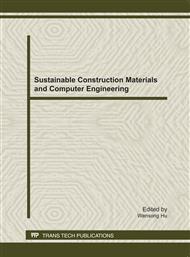p.828
p.835
p.842
p.847
p.852
p.858
p.865
p.875
p.882
Irreducible Water Saturation Measurement of Volcanic Rocks Using Nuclear Magnetic Resonance
Abstract:
Irreducible water saturation is one of the fundamental parameters in characterizing reservoir formations, and determined as the key factor in reserve calculation and fluid type identification. Measurement on whole core must be taken to analyze irreducible water saturation of volcanic rocks as a result of lithological diversity, porous structure complexity and strong heterogeneity. A new testing method for whole core is proposed by combining Nuclear Magnetic Resonance and centrifugal tests. This new method measures irreducible water saturation using T2 spectrum of whole core demarcated by T2 cutoff measured on 25mm or 38mm diameter core samples which drilled from the whole core. The new method solved the size and shape restricts, long test cycles and viscous fingering defects of conventional methods. According to the comparison with conventional method, the results of the new method coincide well on homogeneous rocks, and are more accuracy with fractured samples.
Info:
Periodical:
Pages:
852-857
Citation:
Online since:
September 2011
Authors:
Price:
Сopyright:
© 2012 Trans Tech Publications Ltd. All Rights Reserved
Share:
Citation:


